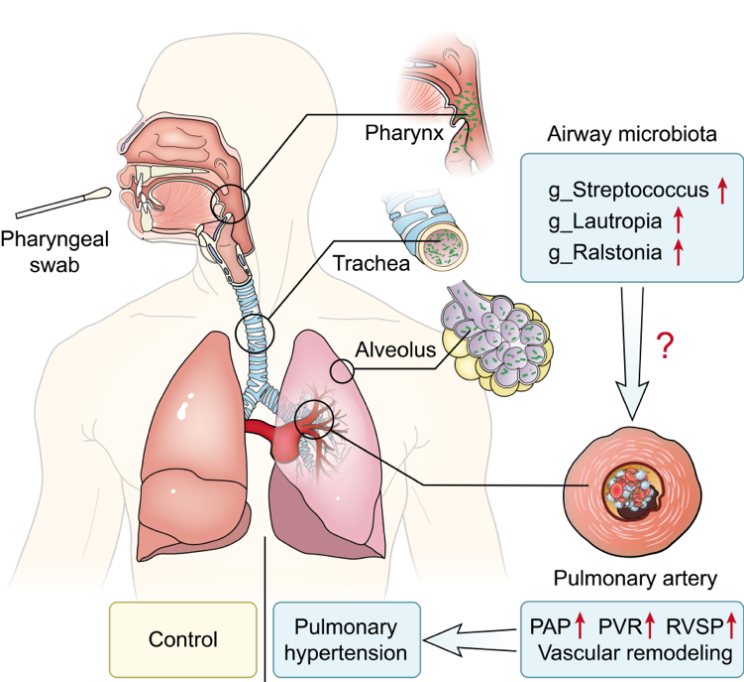First Discovery of the Relation Between Altered Airway Microbiota Composition and Pulmonary Hypertension
2020-09-141180On September 14th, 2020, the pulmonary vascular disease team of the State Key Laboratory of Respiratory Disease published an online research paper “Altered Airway Microbiota Composition in Patients with Pulmonary Hypertension” on the authoritative journal Hypertension in the field of circulation (impact factor: 7.713, Division of Chinese Academy of Sciences: Top Journal of Medical Division 1). Professor Jian Wang and Associate Professor Kai Yang are the co-corresponding authors of this paper, and Dr. Chenting Zhang, Dr. Tingting Zhang, and Professor Wenju Lu are the co-first authors.

The surface of the human body inside and out is covered in millions of micro-organisms, which are affected by complex internal and external factors. The human microecosystem is a very complex system, and the normal flora plays a vital role in the life activities of the host. The pharynx is a physiological part that connects the oral cavity, nasopharynx and lower respiratory tract, esophagus, etc. It is connected to the external environment and is an important channel for bacteria to infect the lower respiratory tract and cause lung infections. The dynamic balance of the pharyngeal microbiome plays an important role in the occurrence and development of many diseases. As a result, the systematic study of the composition and distribution of the pharyngeal microbiome under the condition of pulmonary hypertension is of potential importance for further understanding the phenotype and mechanism of pulmonary hypertension.
In this research, the research team collected the pharyngeal swab samples of 118 cases of pulmonary hypertension and 79 control groups for 16S ribosomal RNA gene sequencing. It has systematically reported that there were differences in the composition of pharyngeal microbiome between patients with pulmonary hypertension and the control groups for the first time. Compared with the control groups, the pharyngeal microbiome of patients with pulmonary hypertension is more abundant, but the diversity of bacteria is reduced. Among them, the abundance of three types of bacteria, namely, Streptococcus, Lautropia, and Ralstonia, is significantly higher than that of the control groups, and the statistical significance between groups and LDFSe multi-level species difference analysis suggest that the differential expression of these three kinds of bacteria in the pharynx is expected to become a new and potential biomarker for non-invasive diagnosis of pulmonary hypertension. Further functional predictive analysis indicates that the enriched flora of the pharynx of patients with pulmonary hypertension is closely related to the activation of signal pathways such as bacterial invasion of epithelial cells and microbial toxin.

















